
Born and raised in Japan before moving to New York, Tomokazu Matsuyama explores the collisions between East and West in his paintings. On the heels of his new Sotheby’s exhibition Harmless Charm, the artist speaks to Zaneta Cheng about why NFT painting can render the same effect as paint on canvas and how each world in his pieces asks us to confront who we are in the modern age.
Take a look at Melody Mad Afternoon, a painting that Tomokazu Matsuyama has hanging as one of the physical pieces of art (acrylic and mixed media on canvas) in his Harmless Charm exhibition, and the scene is like that of an evening cartoon. A general overview seems to suggest that one is looking at a snapshot of life in a suburban American living room. It wouldn’t be remiss to say this because there’s a Brillo soap pad box on the floor. It’s a piece of iconic commercial packaging that Andy Warhol used to symbolise American life. Only, there’s also what seems to be a cat from ancient Japanese or Chinese culture sitting on top of it. It’s confusing and it seems neither heads nor tails can be made from it.
And that confusion is exactly what Matsuyama wants to convey. What we, the audience, sees is a culmination of our cultural upbringing and exposure. Each work, be it the 360 ̊ digital experience with sound or a physical painting made with paint on canvas, is a deep dive into our self-identity and what informs our realities. Through the fluorescent pieces, Matsuyama mashes up what we know and what we might know into paintings of semi-familiar references and icons to trigger discussions about globalisation and what it means to be human in today’s interconnected world.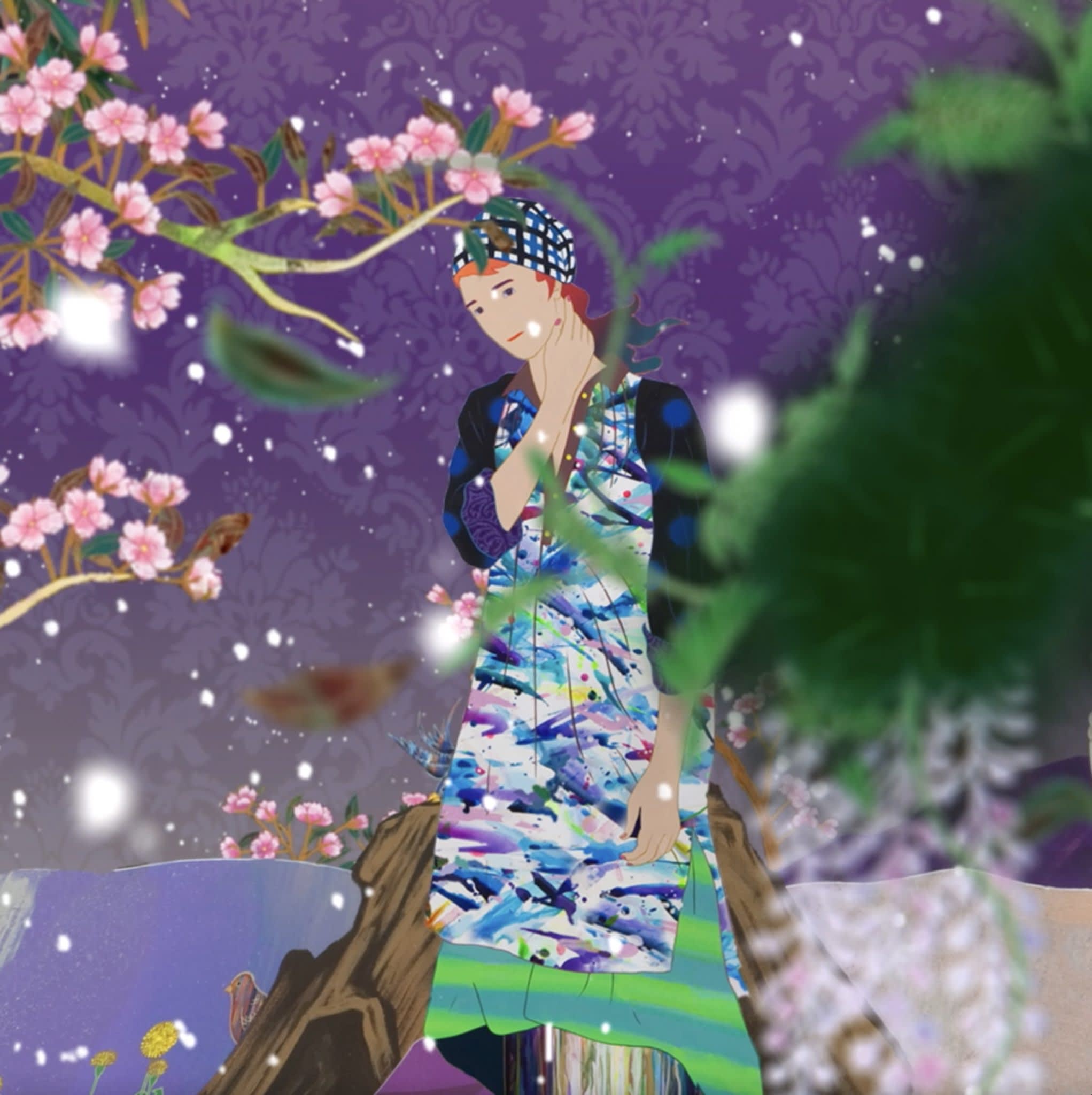
NFT Twist Again Forever. Photo: handout
Could you talk me through your new Harmless Charm exhibition?
TM: Let me start with the approach – obviously, NFTs have become a well-talked-about subject matter. Being a traditional artist making physical works, I’ve seen some distance and I’ve seen some connections. There aren’t a lot of artists I’ve seen who have actually gone into NFTs with the simultaneous ability to fill the hole that traditional art can actually be vocal about.
The way I see it is that there was a potential to make artwork into animated art, but I really haven’t found an NFT piece that I find visually very stunning. Being a visual artist, it seems like the content or the concept of the context itself became more significant than anything else. So, with this exhibition, I wanted to make NFT works that are like my paintings but it wasn’t about the animation. It was about an image that’s moving, so it speaks in that language.
TM: The way I approached it was the same way I usually approach a painting. There are nine NFT works – three are unique – and they took several months to finish. They loop so they’re less than a minute long and they have to be four megabytes in order to mint, but they also come as 4K high res so the owners can actually protect them in their museums or a public location serving as an extension of what I do. I wanted everyone to have the same experience they usually have when going to a museum – although it could go to the metaverse, but we still live in the real physical world. This was the approach.

Equestrian Series I Will Imagine (top) and To Be A Witness Best Days (bottom). Photos: handout
How about the works?
TM: What I do in my artwork is that I like to incorporate, appropriate, mix, sample or amalgamate different values that we live in life. Like, I’m Asian, but I’ve lived in New York for 20 years, so what’s so-called identity really can no longer be considered by our cultural attribution because we’re so influenced and so layered. So my idea is to really mix them all in one to see what happens and really talk about us.
It’s not about the East or the West. You’ll see traditional but also contemporary culture, traditional Asian style and also popular consumer culture in my works. It’s really about trying to hit the gray zone and not to make a statement because the statement is up to the viewers and their own upbringing.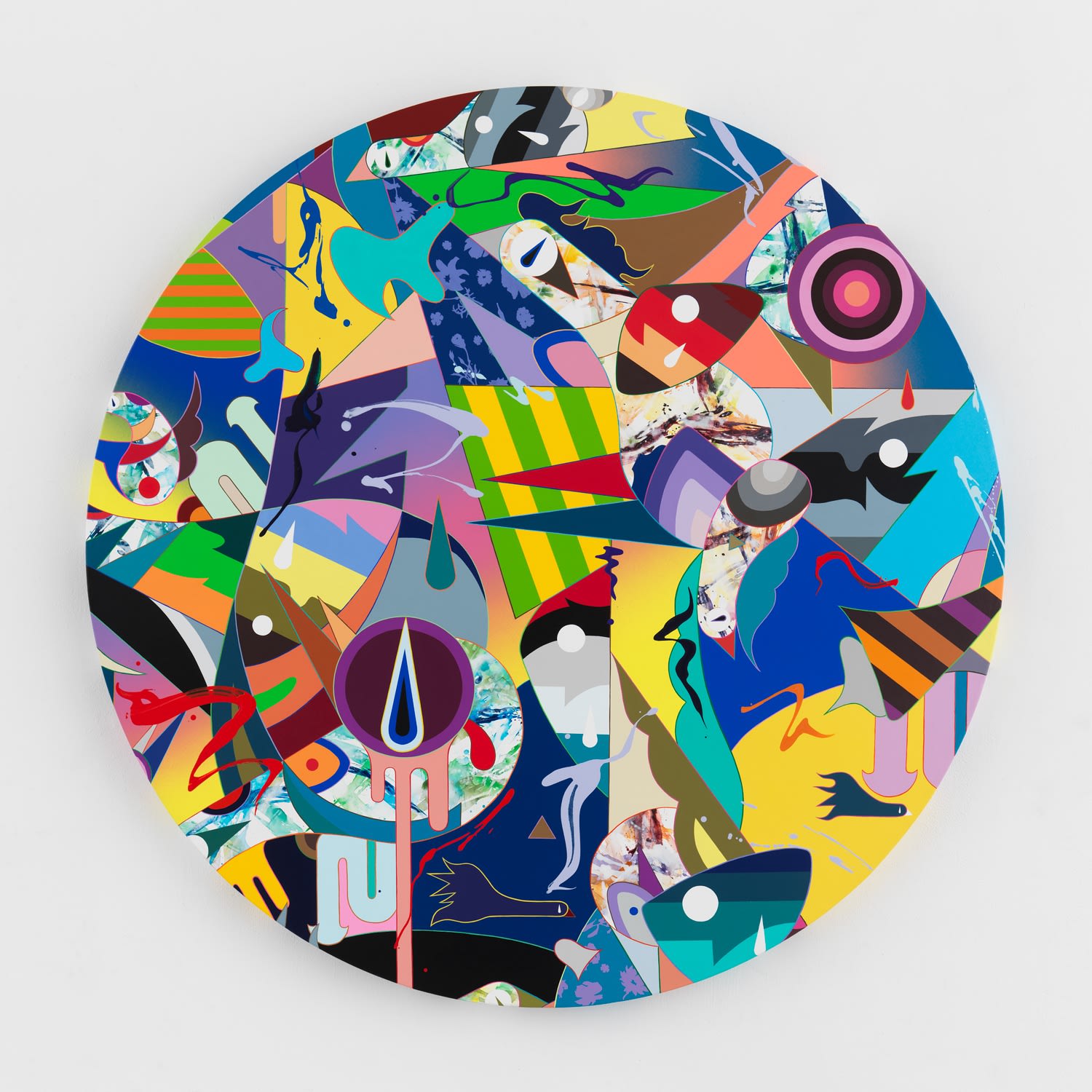

One Way Special (top) and Watervoices and You (bottom). Photos: handout
How do you draw all those references together? What makes you think, “Oh, I should include this cat and also this Hermès scarf and also this Brillo soap pad together”?
TM: They’re undecided. The idea is that it looks like there is a narrative but there really isn’t. What I’m doing is just dropping multiple different cultural references from the past, or from now, which will perhaps connect to the future.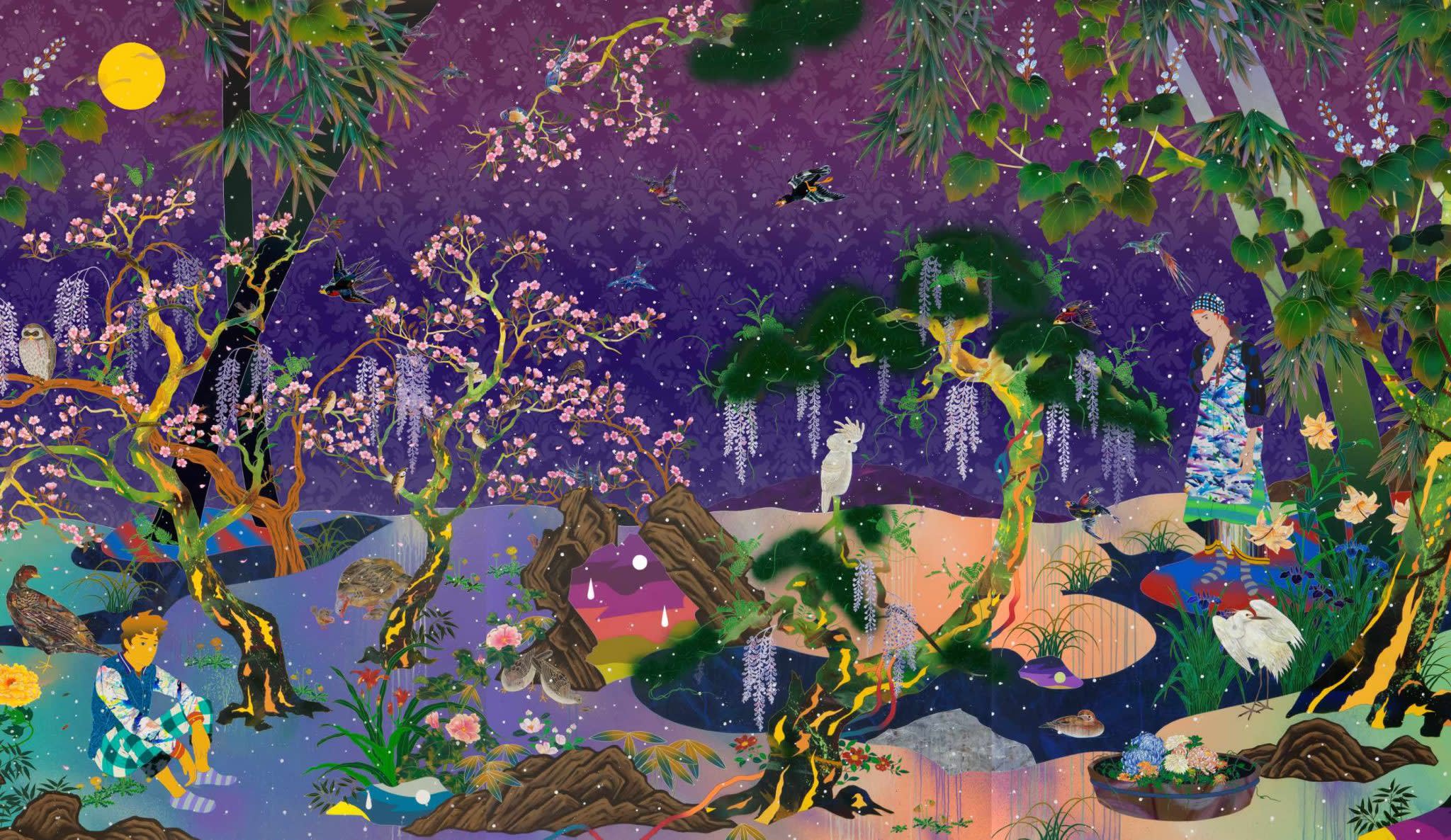
Fictional Landscape Series Unique one of one. Photo: handout
Why did you decide to call it Harmless Charm?
TM: Art is really about portraying our society. A lot of art before this was talking about reality, the dark
side of the world. Now we live under hope and hope has been my theme. And because of this, it took a longer time for me to be acknowledged because when you paint something happy, people feel distant – people like the dark reality. So one of the reasons why I wanted to paint this Harmless Charm was because I wanted to paint hope.
The other reason is that, traditionally, all Asian paintings have a lucky charm factor to bring good luck and good causes to other people. So I wanted to bring that heritage and connect it to this kind of post-Covid situation.
How did you develop this particular style? When I look at it, I think it looks like it belongs to the manga/anime tradition. Was there a deliberate decision behind it or was it something that resonated with you best?
TM: It’s kind of both. I’m a completely self-taught painter. I don’t know how to paint photos realistically because I was never academically trained. I kind of approach it like a musician – they cut and paste, and they have no formal training. I just sample what feels comfortable in me and see what happens. Now, the more I do, the more I don’t feel comfortable. I started to kind of dispose [of parts] and whatever remained, I polished it and it became what it is now.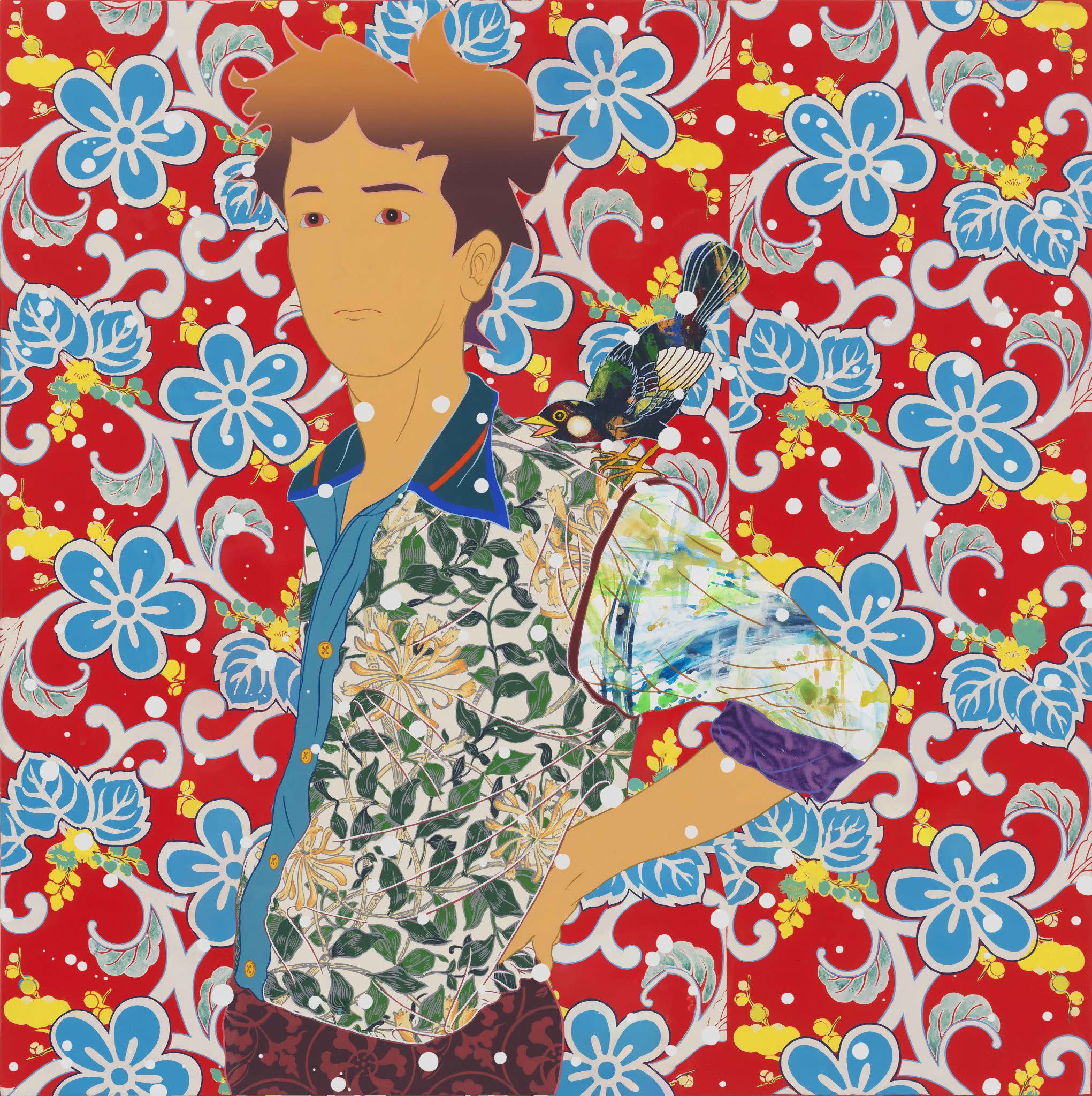
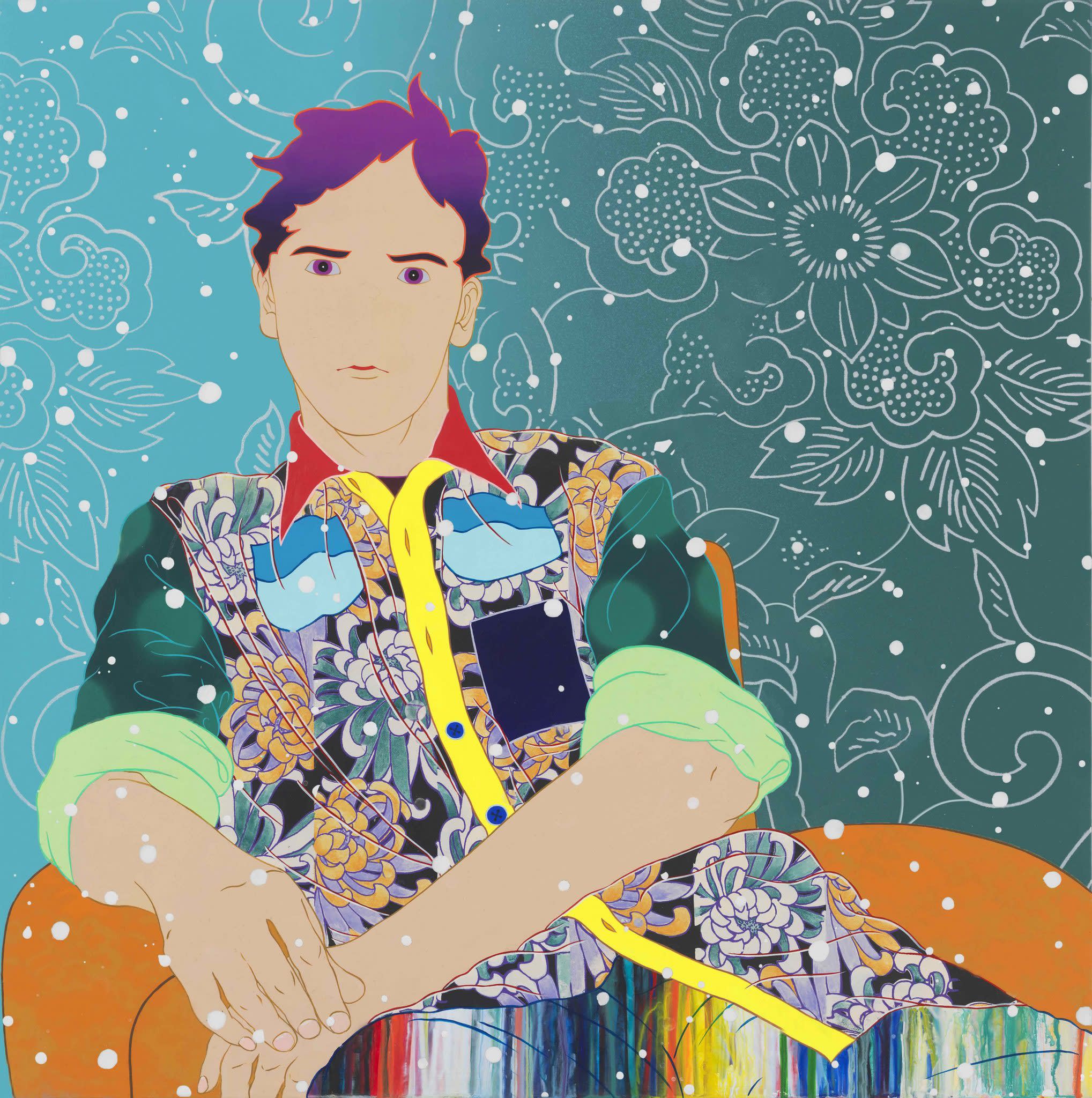
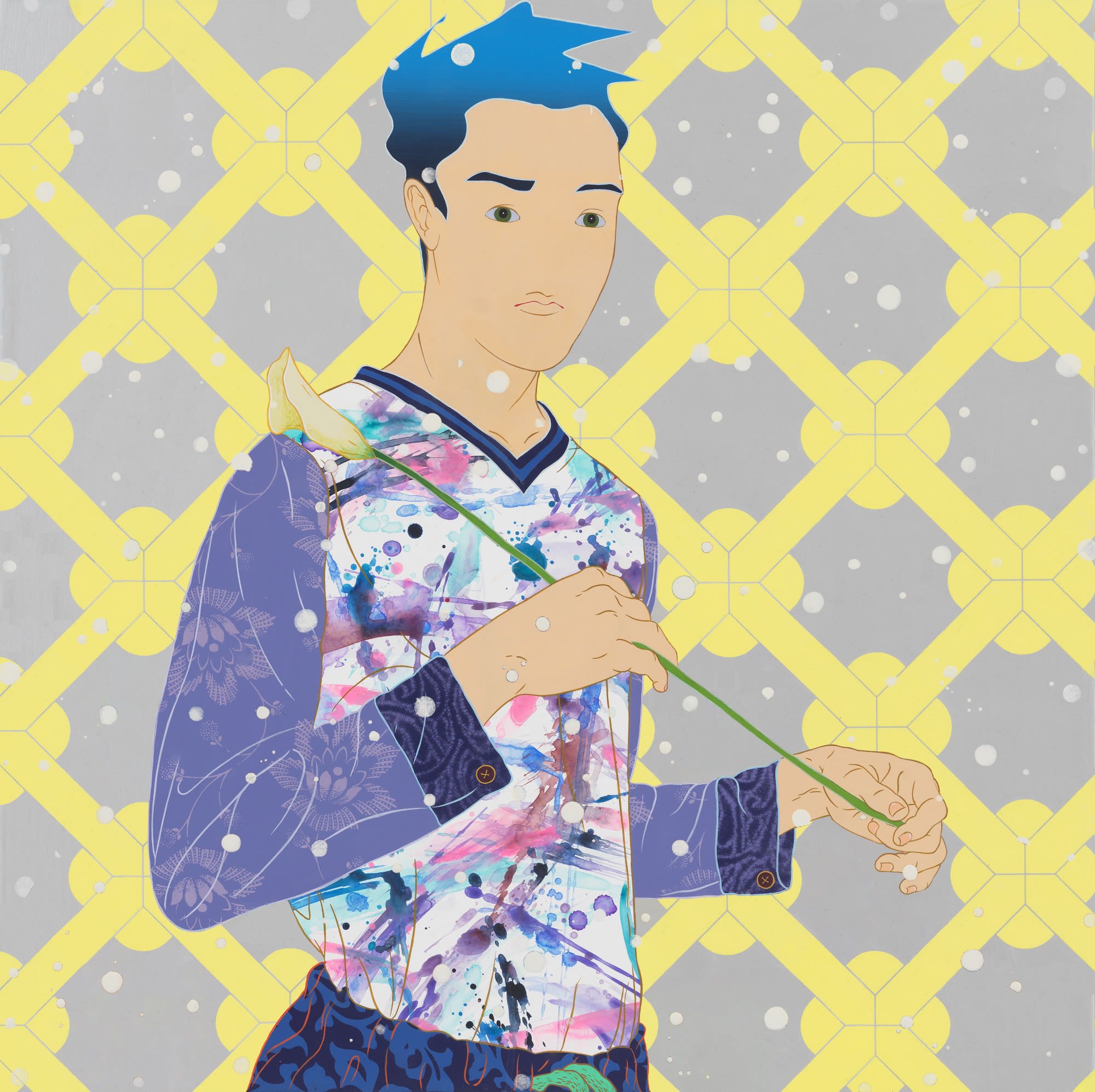
Equestrian Series NFT Portrait 1, 2 and 3. Photos: handout
You use the word appropriate quite freely but there’s been some backlash in the West with this term. What’s your take on appropriation?
TM: I don’t like that word because nobody owns anything. It’s not even borrowing. Information migrates, so in reality, nobody owns anything. The word appropriation is not necessary because everybody owns everything. There’s so much information nowadays and sourcing the right information was not possible before our generation because everything was completely analogue. The searching time was more than the creating time, right? So now when you have access to all of this information, the utmost creativity actually is kind of finding what there is and putting it together to see what happens.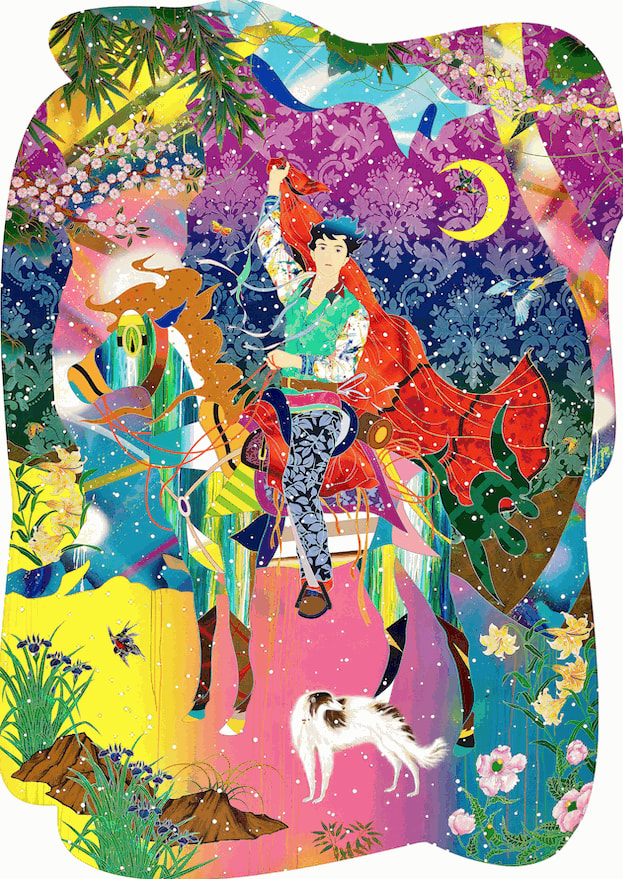
Something Came Together. Photo: handout
How do you sift through all of this information and choose what falls through, what ultimately ends up on canvas?
TM: There’s a lot of information that hasn’t been digitised or archived in the clouds. So what I do when I find information like that, I get really excited. There are digital archives, physical archives, traditional archives that I go hunting in for information and that’s my passion. I have tens of thousands of pieces of information in my studio that are archived differently. So once I have an idea, it’s like, “Hey! Where’s my studio? Can you bring that information?”

